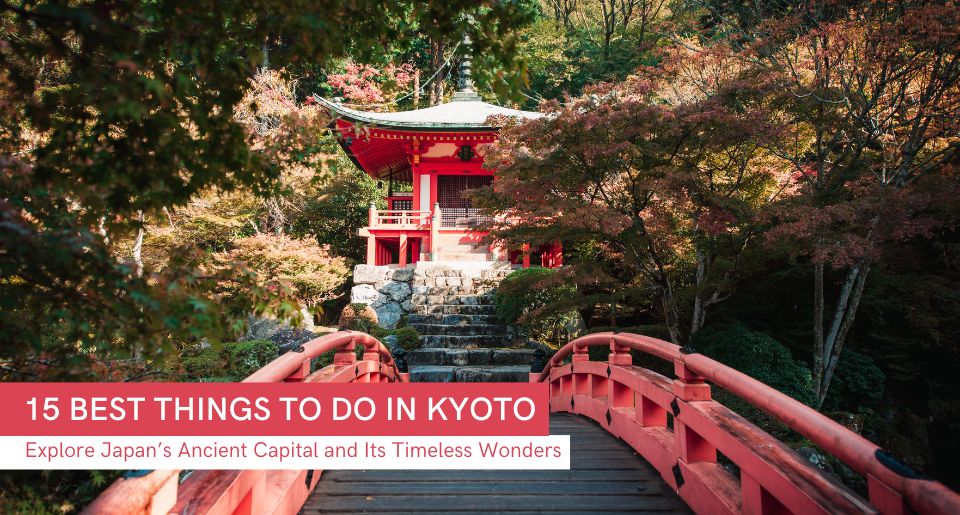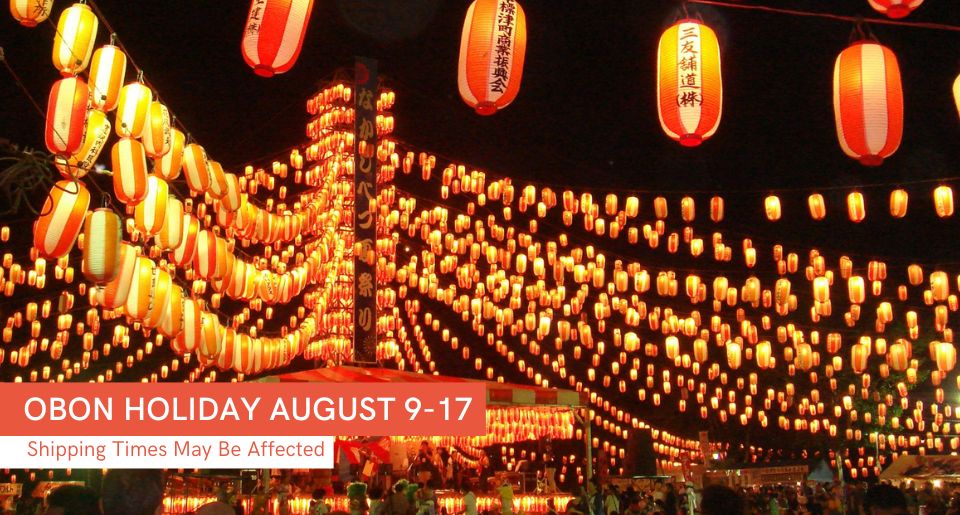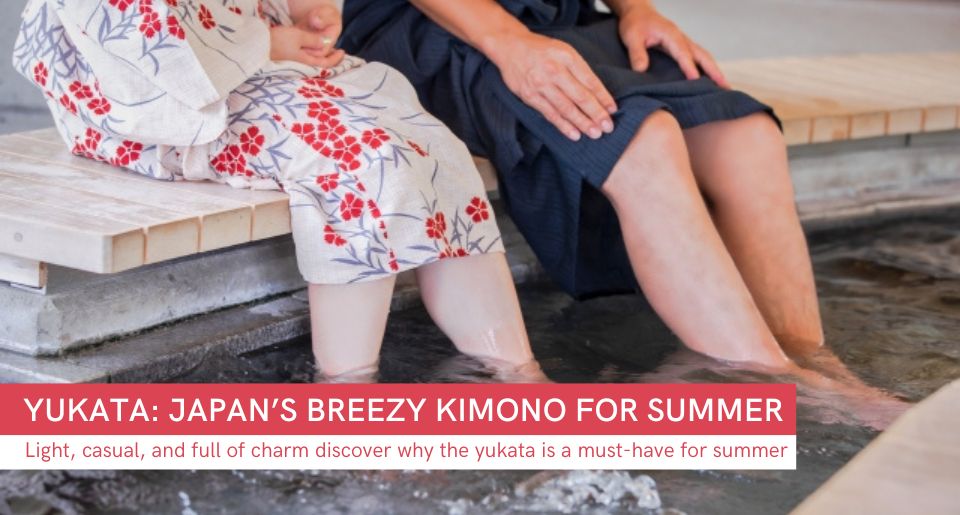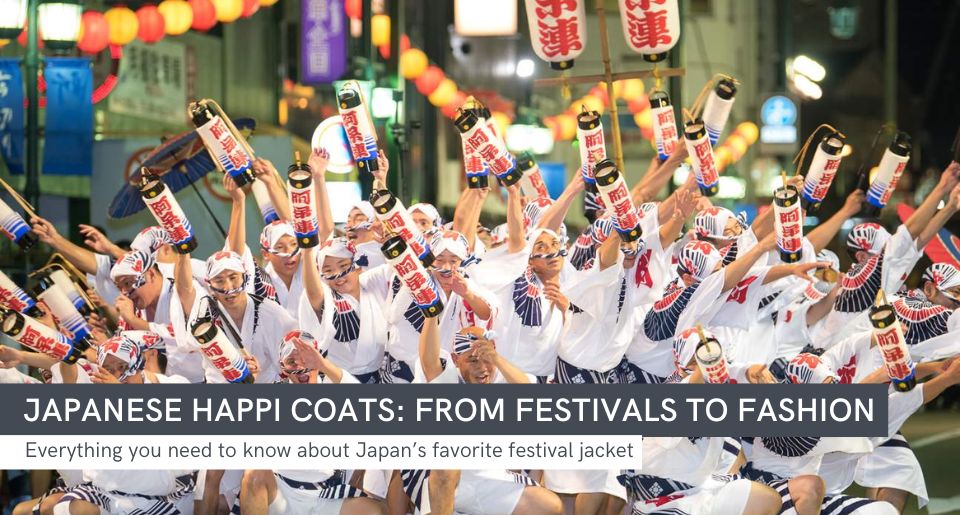Contents
- Introduction
- 1. Visit the too-good-to-be-true Daigoji Temple!
- 2. Embark on the scenic Hozugawa River cruise
- 3. Indulge in a luxurious Kaiseki Ryori meal—A true splurge!
- 4. Visit Kyoto's top sweets cafes
- 5. Explore the authentic geisha culture in Kyoto's Gion
- 6. Find Kyoto’s best local foods at Nishiki Market
- 7. Connect with Legends at Kyoto's samurai and ninja museum
- 8. Take an unforgettable stroll along the Philosopher’s Walk
- 9. Witness live drama, get dressed, eat, and shop at TOEI Kyoto Studio Park!
- 10. Time travel in Kyoto's Golden Pavilion
- 11. Explore the sacred paths of Fushimi Inari Taisha
- 12. Unwind in Kyoto's Traditional Bathhouses
- 13. Wander the Grounds of the ancient Imperial Palace
- 14. Enjoy Kyoto's green tea—arguably the finest you'll ever sip!
- 15. Dress up and witness a real tea ceremony experience!
- Skip the flight and shop Kyoto’s best online!
Introduction
Kyoto is the quintessential Japanese retreat, nestled on the island of Honshu. Here, you'll find everything from ancient Buddhist temples and imperial palaces to traditional wooden houses and Shinto shrines. The city is also a hub for scenic spots ideal for walking or taking a riverboat cruise, peaceful tea ceremonies for unwinding, and a variety of drool-worthy street foods that you’ll crave endlessly.
If Kyoto is on your travel list and you're still undecided, this guide to the 15 best things to do in Kyoto will have you packing your bags immediately!
1. Visit the too-good-to-be-true Daigoji Temple!
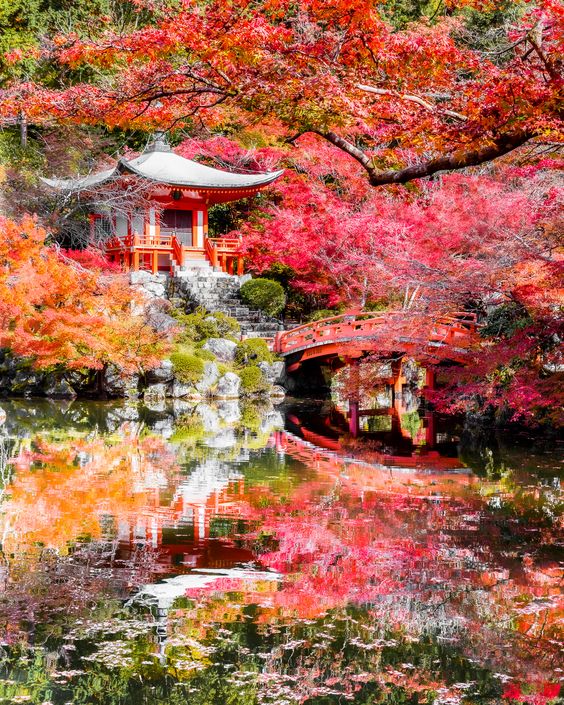
Image source: Pinterest
If you're planning a trip to Kyoto, Daigoji Temple should be at the top of your list. Located in the southeast of Kyoto, this temple stands as a magnificent example of Momoyama architecture and serves as a key site for the Shingon sect of Japanese Buddhism.
At the heart of Daigoji’s main temple grounds lies the Sanboin, an exquisite structure steeped in history as the former residence of the head priest. Far from just a part of the larger complex, the Sanboin stands out as a destination in its own right, celebrated for its stunning landscape garden by the legendary Toyotomi Hideyoshi.
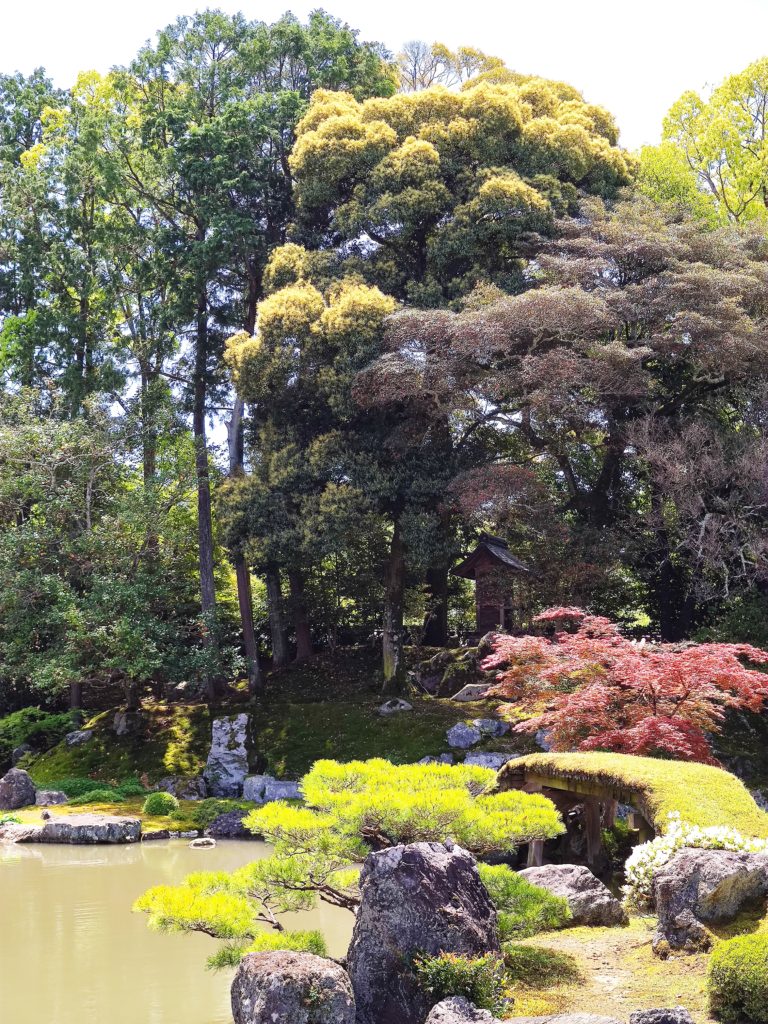
Image source: Hidden Gems in Kyoto
As you wander through this garden, you're invited to dive into a setting where nature's beauty and historical richness connect you intimately with Japan’s spiritual and aesthetic heritage.
Officially founded in 874, Daigoji Temple quickly rose in stature when the Emperor Daigo elevated it to an Imperial Temple a few decades later. This marked the beginning of significant expansions down the mountain's slopes, culminating in a grand layout that spanned 600 hectares across both the upper (Kami Daigo) and lower (Shimo Daigo) sections by the mid-10th century.
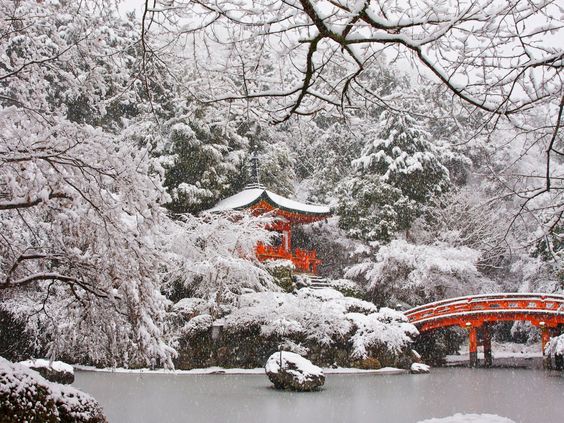
Image source: Pinterest
By the 12th century, Daigoji was recognized as the head temple of the Daigo branch of Shingon Buddhism, securing its place as a pivotal religious site in Japan.
Its influence peaked in 1598 when Toyotomi Hideyoshi, known as the Great Unifier of Japan, hosted the legendary Daigo-no-Hanami cherry blossom viewing party, having planted over 700 cherry trees.
Today, after more than a millennium, Daigoji houses over 150,000 preserved cultural assets, including 75,537 items designated as National Treasures. Its addition to the UNESCO World Heritage list in 1994 underscores its enduring significance and commitment to welcoming visitors from around the world—be sure to be the next to visit!
2. Embark on the scenic Hozugawa River cruise
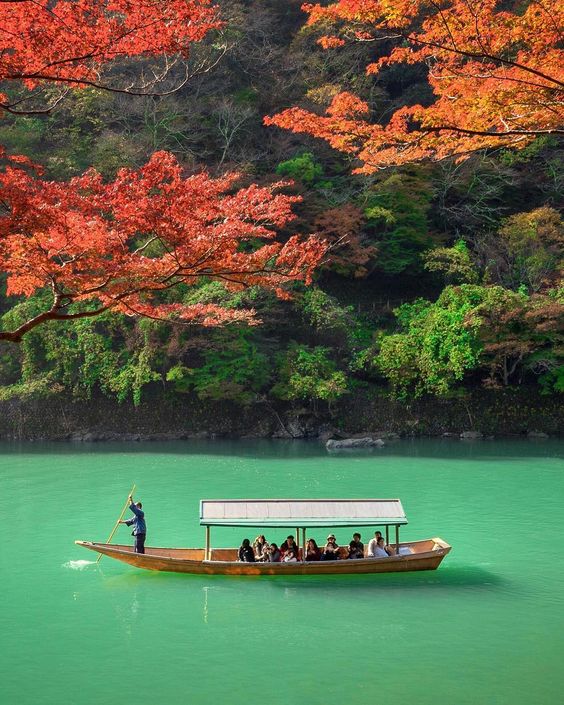
Image source: Pinterest
Another must-experience while in Kyoto are the Hozugawa River Cruises. Embark on a fantasy-like journey from Kameoka to Arashiyama aboard traditional flat-bottomed boats. Guided by experienced boatmen who navigate with oars and bamboo poles, this cruise feels like stepping into a living storybook, where each bend in the river reveals more of Kyoto’s serene beauty.
The two-hour journey takes you down the serene Hozugawa River, offering a leisurely view of the pristine, largely undeveloped ravine. The river cruises are a favored activity throughout the year, though they’re especially magical from mid-November to early December when the autumn leaves are in full spectacle.
- Note: These cruises typically run year-round, but do check ahead as they pause during heavy rain or significant changes in water levels.
Your journey becomes even more memorable as the boatmen entertain you with tales of the surrounding wildlife, historical insights, and tips for capturing the perfect photo in this magical setting (your social media will light up with likes!)
3. Indulge in a luxurious Kaiseki Ryori meal—A true splurge!
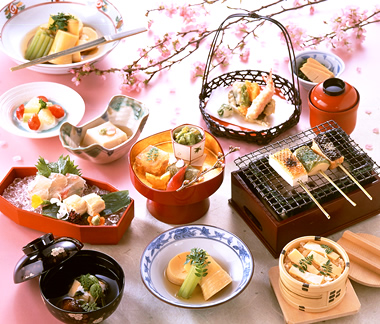
Image source: MINOKICHI
If you're heading to Kyoto, you're in for a real treat when it comes to food. Kaiseki ryori, once a simple part of tea ceremonies, is now a sophisticated feast that locals and aristocrats alike rave about. This culinary style, particularly the Kyoto version known as kyo kaiseki, features local and seasonal ingredients in a series of delicately flavored dishes.
For a truly memorable meal, book a stay at a ryokan where kaiseki dinners are a highlight, or treat yourself at a sophisticated ryotei in Pontocho or Gion—both options promise a dining experience that’s nothing short of extraordinary!
4. Visit Kyoto's top sweets cafes
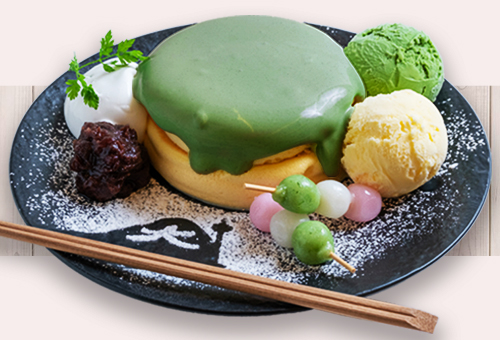
Image source: PANCAKE ROOM
Kyoto truly is a paradise for those with a sweet tooth, offering a delightful array of cafes and desserts that are as visually appealing as they are tasty. Just steps from Kyoto Station, PANCAKE ROOM introduces a revolutionary approach to pancakes, blending traditional Kyoto charm with a touch of modern culinary innovation.
Each pancake is meticulously prepared upon order—slowly baked at a low temperature to achieve a supremely soft texture that's truly exceptional.
The PANCAKE ROOM doesn't just excel in pancakes; their menu also boasts a variety of tropical drinks, perfect for complementing your already delicious meal!
Saryo Wakana stands out as another must-visit for anyone craving traditional Japanese sweet. This cafe is renowned for its dango, small round dumplings made from glutinous rice flour. Try their popular mitarashi dango, which are skewered and coated in a sweet soy sauce glaze, boasting a perfect balance of crispy and fluffy textures—ideal for both taste and photo ops!
For those looking to blend Japanese and European flavors, SUGiTORA is the place to go. Their stylish mini parfaits are like individual works of art, and the gelato menu— featuring flavors like tangerine, Earl Grey, pistachio, and strawberry—offers a refreshing twist with delightful Japanese-inspired toppings.
5. Explore the authentic geisha culture in Kyoto's Gion
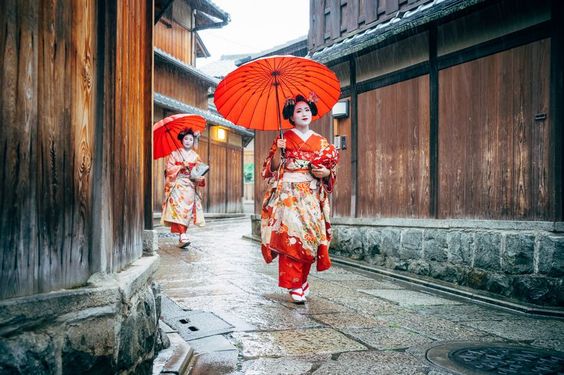
Image source: Pinterest
A visit to Kyoto wouldn’t be complete without exploring Gion, the heartbeat of Kyoto’s geisha culture. Located along Shijo Avenue, between the historical Yasaka Shrine and the scenic Kamo River, Gion is famous for its traditional wooden merchant houses, known as machiya.
Stroll through Hanami-koji Street, where ancient wooden machiya houses have been transformed into top-notch restaurants serving Kyoto-style kaiseki ryori. It's a picturesque feast for both your eyes and taste buds!
- Just a heads-up: recently, the folks in Gion have reached out to the city council, hoping for some action following a spike in tourism that's unfortunately led to more harassment of their traditional entertainers. It's such a shame, considering geishas represent such a venerable aspect of culture that deserves our utmost respect.
6. Find Kyoto’s best local foods at Nishiki Market
Kyoto Japan Street Food Tour! Nishiki Market
If you’re in Kyoto, make sure to explore Nishiki Market. This bustling five-block long shopping lane is packed with over one hundred vendors offering everything from fresh fruits, veggies, seafood, street food, tea, and much more!
From tiny, narrow stalls to larger two-story shops, the stores at Nishiki Market cater to a range of tastes, each specializing in a specific type of food. Nearly all the products sold here are locally sourced, ensuring an authentic Kyoto culinary experience.
The market's bustling yet welcoming atmosphere makes it an essential stop for anyone eager to explore the diverse flavors that define Kyoto—all of which are, quite frankly, superb!
7. Connect with Legends at Kyoto's samurai and ninja museum
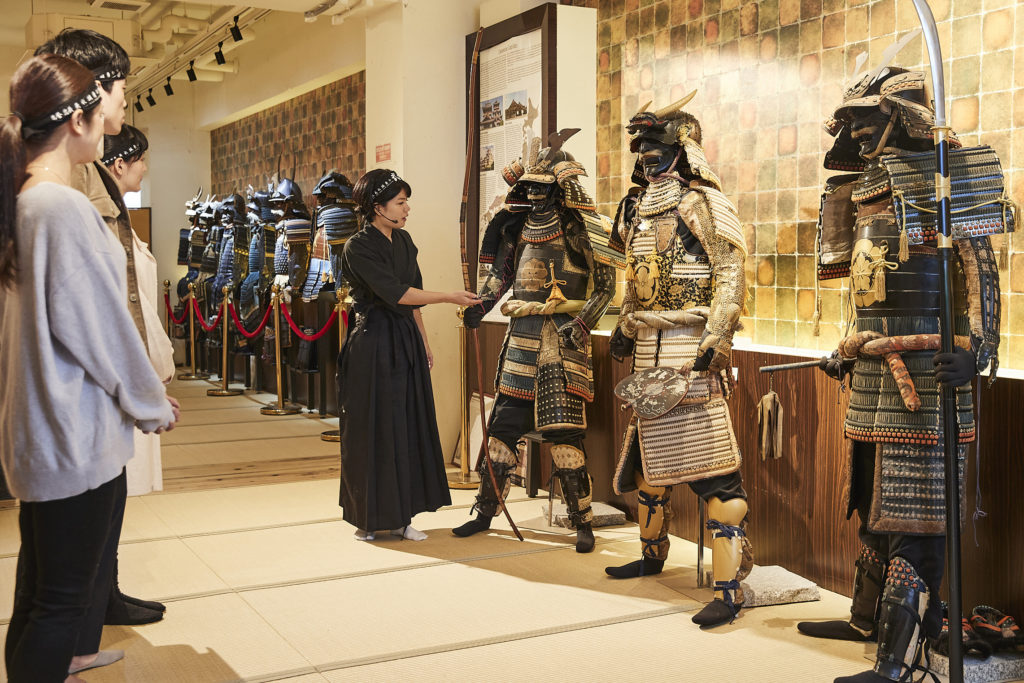
Image source: SAMURAI NINJA MUSEUM KYOTO With Experience
The SAMURAI NINJA MUSEUM KYOTO With Experience is a must-do activity for anyone visiting the ancient capital city of Kyoto—where your childhood dreams of ninja and samurai adventures come to life!
Whether you're a devoted fan of samurai and ninja lore, a martial arts enthusiast, or simply captivated by Japan's rich history, you will not be disappointed. The museum offers a fully guided tour in English, ensuring that everyone can deeply engage with the fascinating exhibits.
You’ll explore an extensive collection that includes everything from the authentic armor and weapons used by the samurai to the secretive tools and weapons of the ninjas.
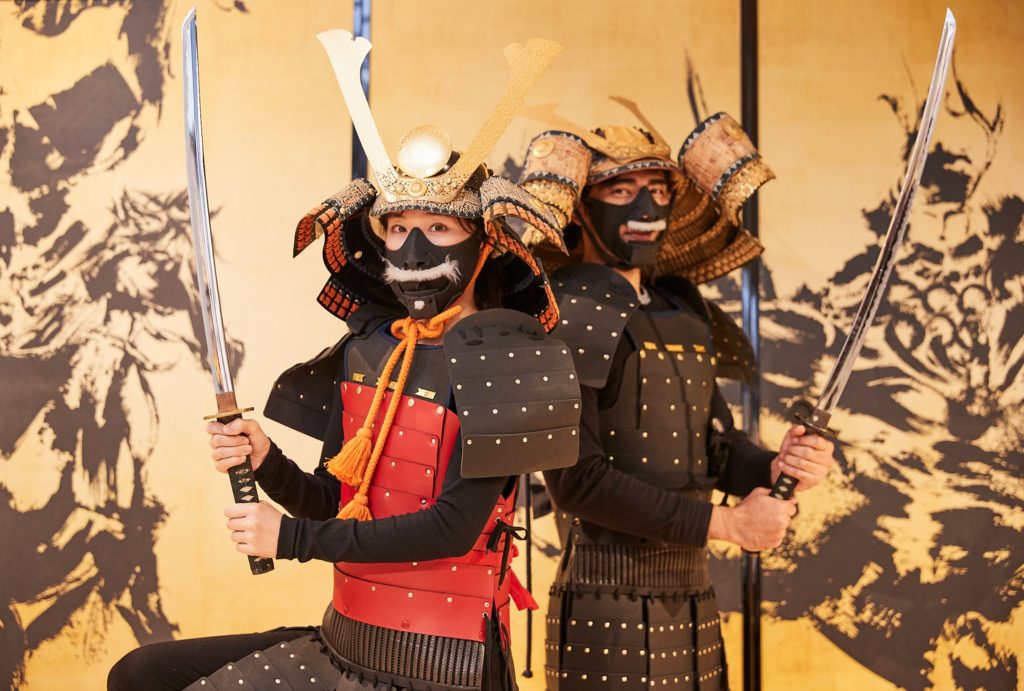
Image source: SAMURAI NINJA MUSEUM KYOTO With Experience
This journey through Japan's medieval past doesn't just showcase these items; it brings them to life with stories and insights that paint a vivid picture of the era.
But the experience doesn't end with the exhibits. The Kyoto Samurai and Ninja Museum also provides a variety of interactive activities that allow you to step into the shoes of these legendary warriors. It’s an engaging, educational, and thrilling way to spend a day in Kyoto—an unforgettable experience indeed!
8. Take an unforgettable stroll along the Philosopher’s Walk
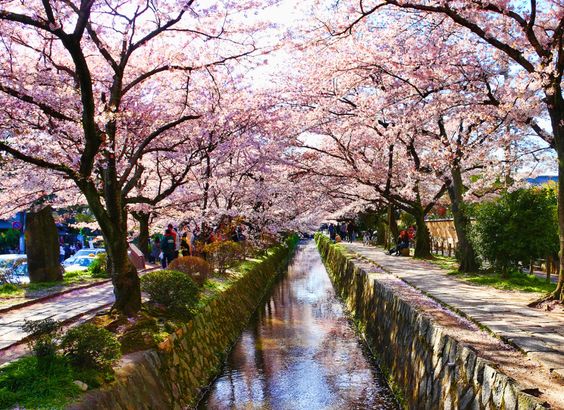
Image source: Pinterest
For a serene escape in Kyoto, the Philosopher's Walk is a must-visit. This charming pedestrian path, lined with cherry trees, meanders alongside a canal stretching between Ginkaku-ji and Nanzen-ji.
Named for the 20th-century philosophers Nishida Kitaro and Hajime Tanabe, who reportedly used this route for their reflective strolls, the walk was first laid out in 1890 and later expanded in 1912.
As it traces the flow of water from the Lake Biwa Canal, the path also offers tranquil views and passes notable spiritual sites like Hōnen-in, Ōtoyo Shrine, and Eikan-dō Zenrin-ji.
Typically, it takes about 30 minutes to complete the walk, but with so much to see, you might find yourself lingering longer than planned. And really, with so much beauty to take in, who’s counting the minutes?
9. Witness live drama, get dressed, eat, and shop at TOEI Kyoto Studio Park!
TOEI Kyoto Studio Park offers a thrilling and unique experience as the only theme park in Japan where visitors can watch the filming of period dramas (jidaigeki films). Wander freely around a meticulously detailed Edo period street set, actively used to shoot over 200 films annually.
When you make it there, you can immerse yourself in a series of thrilling events:
- Transformation Experience: Dress up in period attire with four distinct courses available, and roam the studio park as if you were a citizen of ancient Edo!
- Kai Kai Yokai Festival: This autumn, step into the supernatural as Kyoto transforms into the “City of Yokai,” filled with enchanting creatures from Japanese folklore.
- EDO SAKABA: Step back in time at the legendary "Uzumasa Edo Sakaba" night event, where the ambiance and festivities transport you directly to the Edo era.
- Evangelion Kyoto Base: Board the world’s first EVA, an unprecedented attraction for fans of the iconic series.
- Oedo Street Performances: Enjoy traditional arts and performances that bring the drama and excitement of period films right before your eyes!
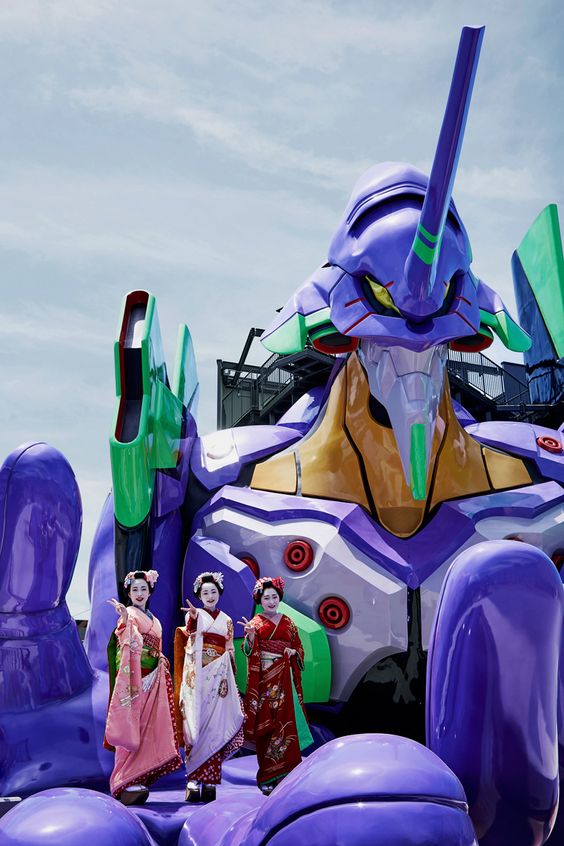
Image source: Pinterest
At TOEI Kyoto Studio Park, the dining experience perfectly complements the atmosphere, offering a delightful array of Japanese cuisine that is sure to enhance your visit.
Step into Kiraku to experience the legendary 'Mitohan Ramen,' or head to Kaikatei for a taste of exclusive Kyoto udon varieties. Restaurant Chanbara is the go-to for satisfying deep-fried treats, while Milk Hall’s 'Ninja Parfait' promises a memorable dessert experience with its grand size and presentation.
Conclude your visit to TOEI Kyoto Studio Park by exploring the selection of historical drama-related products available at the souvenir shops—then call it a day!
10. Time travel in Kyoto's Golden Pavilion
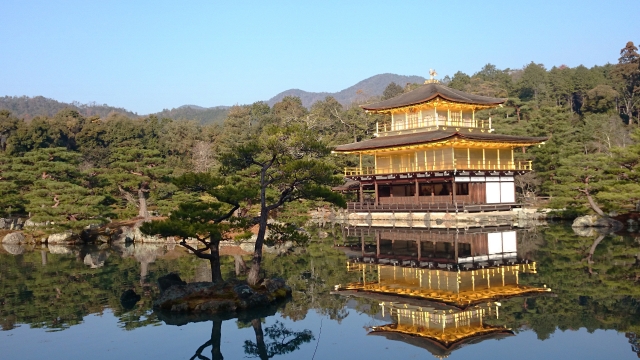
Walking through Kyoto feels like stepping into a time machine—no exaggeration! Take, for instance, Kinkakuji, the Golden Pavilion, a Zen temple in northern Kyoto, where the top two floors are completely covered in gold leaf.
Originally Rokuonji, this temple started as the retirement villa of the shogun Ashikaga Yoshimitsu. Fulfilling his wishes, it transformed into a Zen temple of the Rinzai sect after his demise in 1408. Interestingly, Kinkakuji inspired the creation of Ginkakuji, the Silver Pavilion, which was built by Yoshimitsu's grandson, Ashikaga Yoshimasa, on the opposite side of the city a few decades later.
The Golden Pavilion, or Kinkaku, is a stunning three-story structure located within the Rokuon-ji temple complex. The upper two levels of this iconic building are adorned with pure gold leaf, reflecting a shimmering brilliance that captures the essence of ancient Japan.
Exploring this remarkable site offers you a glimpse into the architectural and cultural heritage that has been preserved through the centuries—an opportunity too good to miss!
11. Explore the sacred paths of Fushimi Inari Taisha
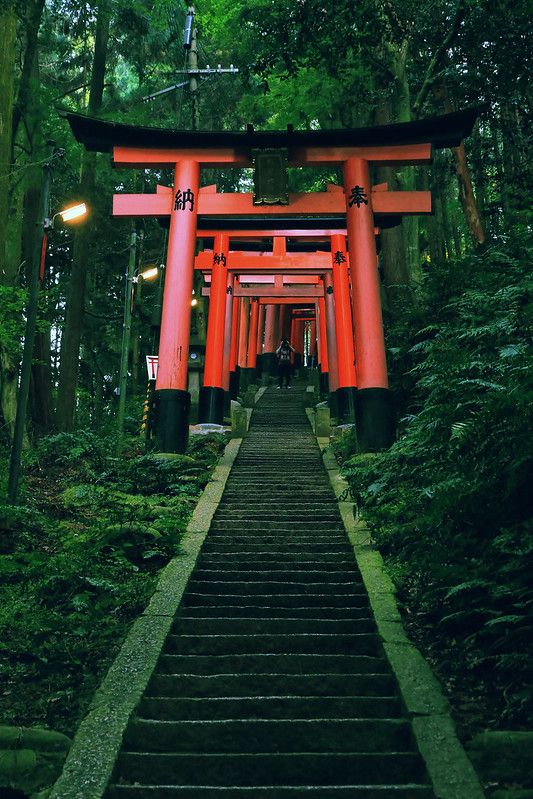
Image source: Pinterest
Fushimi Inari Taisha, also known as "O-inari-san," stands as the head shrine of the numerous Inari shrines sprinkled across Japan—numbering around thirty thousand.
Fushimi Inari Taisha stands as the head shrine, and for over 1300 years since its founding in 711 AD, it has drawn people seeking blessings for harvests, business success, and family safety. In recent years, this revered shrine has also captivated international tourists, becoming a global icon of Kyoto and Japan alike.
The shrine marked its 1300th anniversary in 2011 and is recognized as an Important Cultural Property. It comprises five distinct shrines—the lower, middle, upper, and two auxiliary shrines, Tanaka and Shino-Okami.
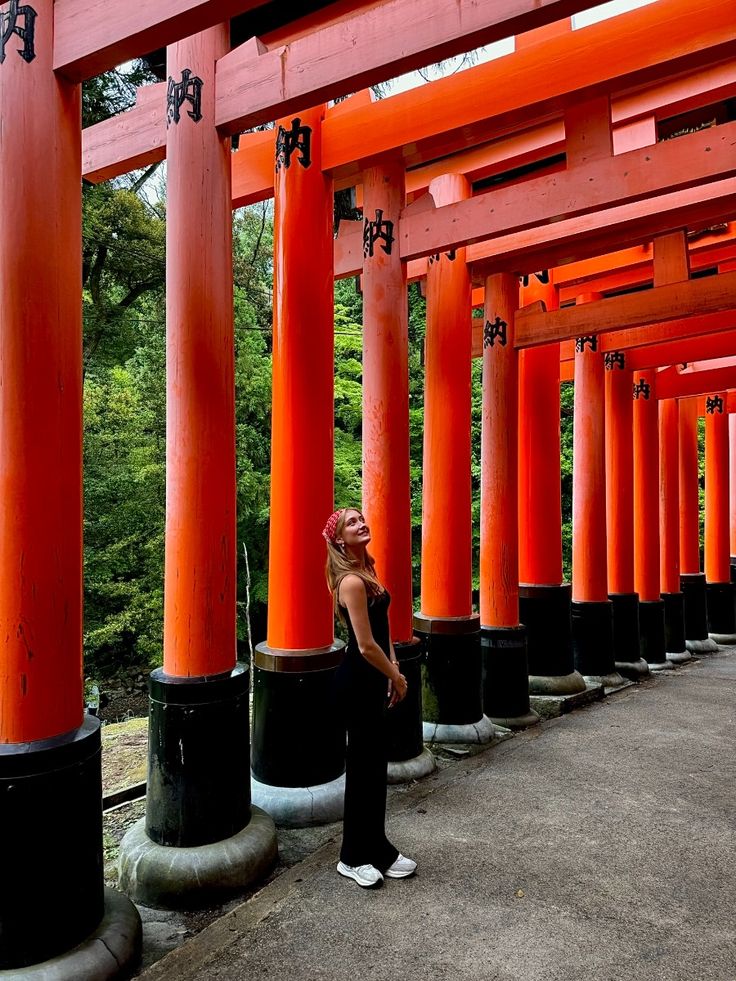
Image source: Pinterest
Each of these shrines symbolizes and celebrates the different virtues of Inari Okami, reflecting the deep spiritual and cultural reverence that has been sustained through centuries at this sacred site.
Make sure to catch the traditional festivals and rituals held throughout the year at Fushimi Inari Taisha. These seasonal events are quintessential reflections of Kyoto's legacy as the ancient capital of Japan, filled with bustling worshippers that immerse you in the true spirit of Kyoto!
12. Unwind in Kyoto's Traditional Bathhouses
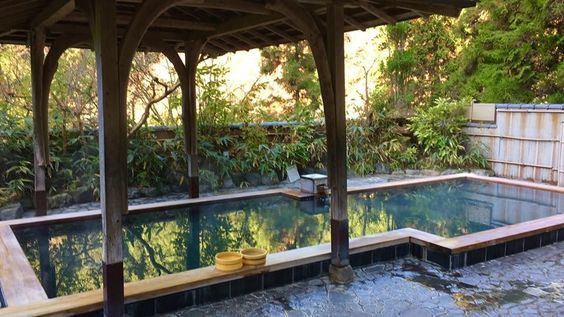
Image source: Pinterest
When in Kyoto, unwinding in a traditional bathhouse is an essential Japanese experience. While the city itself doesn't have natural hot springs, or onsen, it offers plenty of sento, which are public baths using heated tap water.
Both onsen and sento provide unique, relaxing experiences, but there are some key differences to note. Onsen water comes from natural hot springs and contains minerals known for their health benefits, meeting the country’s stringent hot spring qualifications. Sentos, on the other hand, are typically found in urban areas and use artificially heated water.
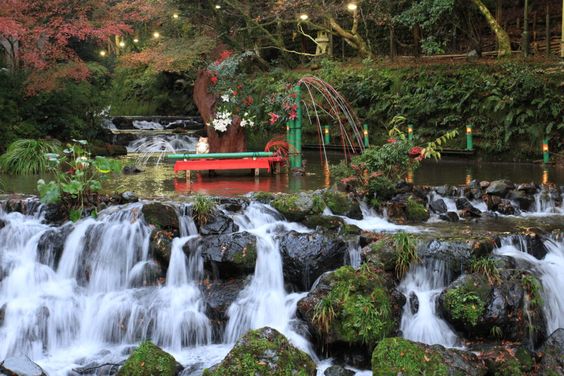
Image source: Pinterest
If you're eager to soak in mineral-rich waters, you'll need to venture outside of Kyoto to places like Kurama Onsen or Arima Hot Spring. For those staying in the city and looking for a delightful soak, visiting Nishiki-yu in the downtown area or Goko-yu near Gojo is highly recommended.
- Friendly reminder: For newcomers to the onsen and sento culture, familiarizing yourself with the etiquette and expectations is crucial to fully enjoy the experience and avoid any cultural faux pas.
13. Wander the Grounds of the ancient Imperial Palace
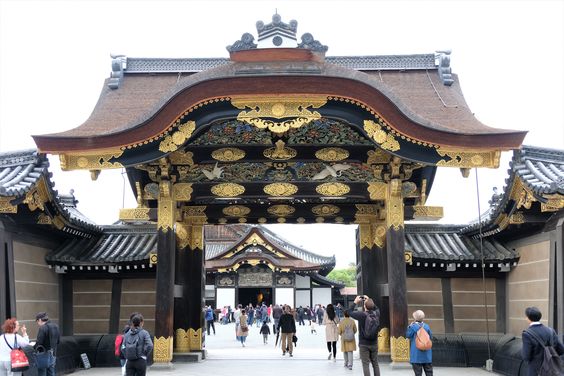
Image source: Pinterest
Stepping into the Kyoto Imperial Palace feels like a journey back in time. This historical gem was the home of Japan's Imperial Family until 1868.
Located within the vast Kyoto Imperial Park, the palace, alongside the Sento Imperial Palace, offers a peek into the lives of emperors past. The complex was reconstructed in 1855 and houses several significant structures like the Kogosyo and Ogakumonjyo, each echoing the architectural elegance of Japan's storied dynasties.
Don't miss a leisurely stroll through the Kyoto Imperial Park, spanning 1300 meters by 700 meters. It's a favorite recreational spot for both locals and tourists, with wide gravel paths, lush lawns, and serene tree groves.
A highlight is the exquisite cluster of weeping cherry trees beside Konoe Pond. These bloom beautifully for two to three weeks from late March to mid-April, offering a quintessential Japanese spring experience that's absolutely worth your visit!
14. Enjoy Kyoto's green tea—arguably the finest you'll ever sip!
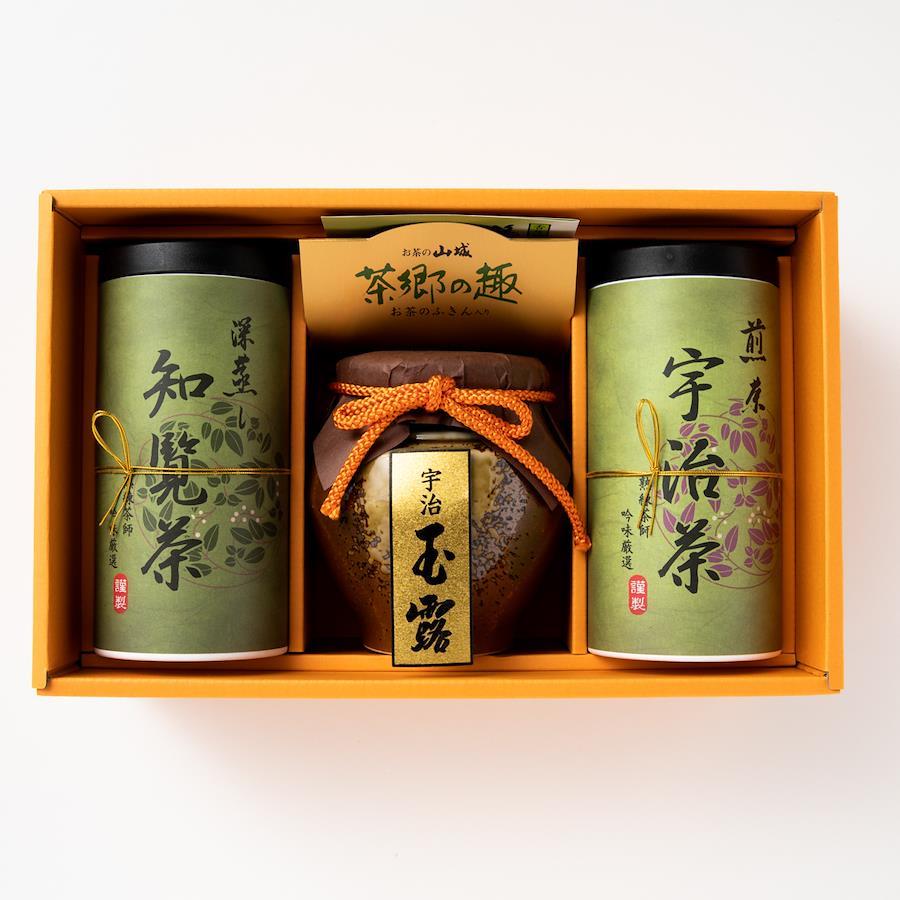
Kyoto green tea featured on ZenPlus
Kyoto is overflowing with unique local treats, but the green tea? That’s in a league of its own, cherished by seasoned tea lovers and those who are just starting to explore tea!
And there's no need to visit Kyoto to experience its best green tea…
Established back in 1960 in Wazuka-cho, a region famed for its tea, Yamashiro Bussan has been all about enhancing your tea-drinking experience at home. They bring to the table the celebrated Uji Gyokuro, a top-tier shaded green tea from Uji Tawara—a place that’s pretty much synonymous with Japanese green tea.
With its finely dark leaves, it brews into a deeply green liquid that smells as heavenly as it tastes, offering a grassy flavor with bold umami undertones and a creamy, thick texture. Thanks to collaborations with expert tea farmers across Japan, Yamashiro Bussan curates a wide range of premium teas to delight every palate.
15. Dress up and witness a real tea ceremony experience!
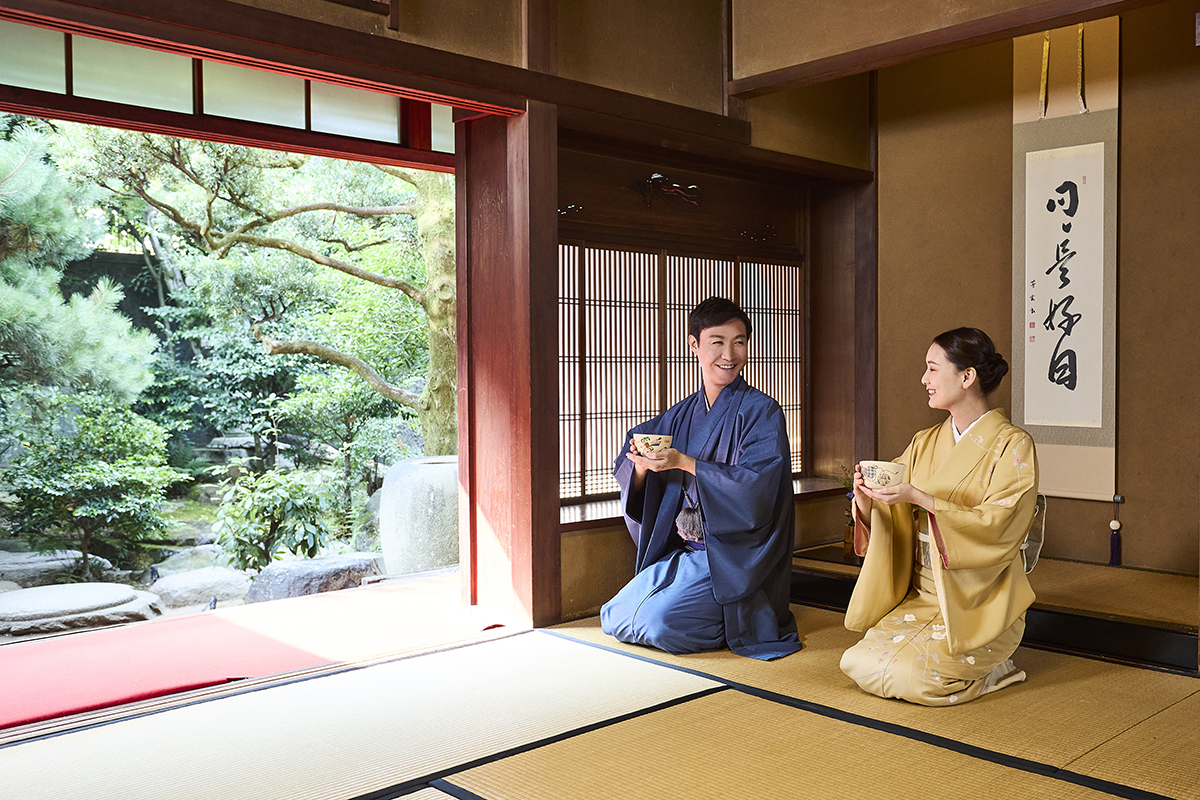
Image source: Kimono Tea Ceremony Kyoto MAIKOYA
Make sure to experience an authentic tea ceremony as you soak in the charm of Kyoto, a city celebrated for its premium tea.
The Japanese tea ceremony, known as "sadō" or "chadō" (the way of tea) and "chanoyu" (hot water for tea), is a ceremonial tradition that involves the meticulous preparation and presentation of green tea. This practice extends beyond merely serving tea—it's an artistic expression and a meditative practice designed to foster a tranquil environment, distancing participants from the hectic pace of daily life.
For a truly immersive experience, consider visiting Kimono Tea Ceremony Kyoto MAIKOYA. Located in the historic Gion district and the city center of Kyoto, MAIKOYA offers visitors the chance to participate in a traditional tea ceremony (yes, just like those ritual scenes you've seen in anime!)
And the tea ceremony is just the beginning…
Tea Ceremony Kyoto Maikoya Teahouse, 2021
This prestigious venue, registered as a tangible cultural property, features two beautiful traditional townhouses, each with its own serene Japanese tea garden, setting the perfect stage for your cultural exploration.
Take your experience up a notch by slipping into a kimono, letting you fully sink into the Japanese atmosphere and Zen vibe. Only at MAIKOYA in Kyoto can you combine the experiences of a traditional tea ceremony and kimono dressing. With kimonos in every size and style, everyone can find their perfect match. Plus, girls and ladies will enjoy a complimentary hairstyle that perfectly complements their chosen kimono.
Not only can you partake in an authentic tea ceremony, but you also get the chance to wear a traditional kimono and snap memorable photos against the backdrop of a picturesque Japanese garden in a Kyoto townhouse.
For those wanting more, take a leisurely stroll through Kyoto's historic streets in your kimono, fully embracing and showcasing the city’s ancient cultural heritage—a perfect day spent in Kyoto!
Skip the flight and shop Kyoto’s best online!
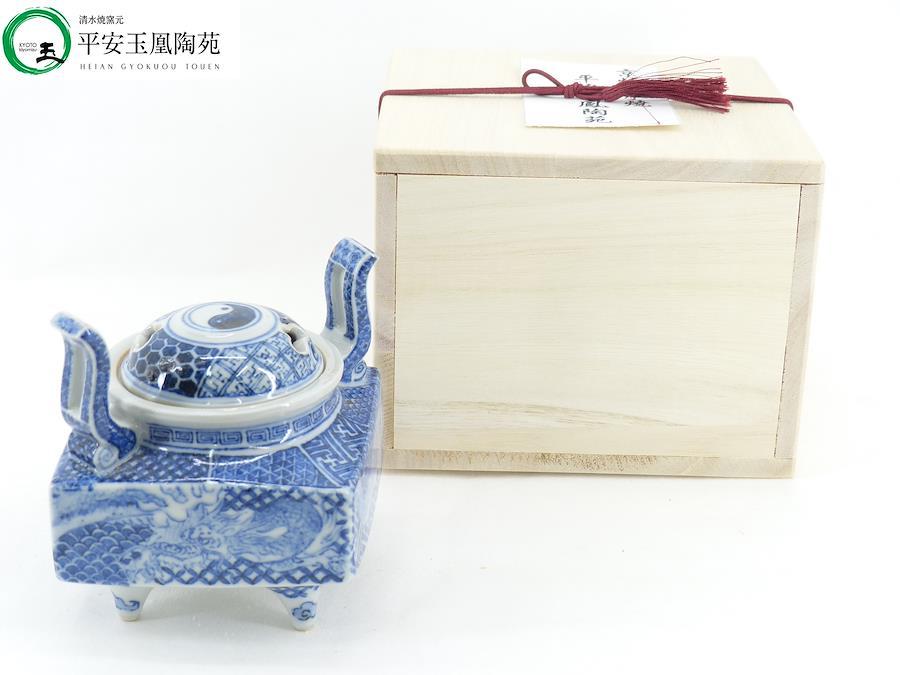
Kiyomizu-yaki pottery hand-painted incense burner featured on ZenPlus
Kyoto is one of the best places to shop for unique finds, and believe it or not, this shopping experience is now accessible right from your living room.
Thanks to ZenPlus, an extensive online marketplace that partners with over 3,000 local retailers across Japan, you're just a click away from owning something special.
With over a decade of industry success, ZenPlus offers an incredible selection of over 5 million items to choose from—from the traditional craftsmanship of Suuzando Hashimoto to the detailed Buddhist altars from Nagomikobo, founded back in 1830. Not to mention, you can snag some authentic Kyo-yaki and Kiyomizuyaki pottery, crafted by the master artisans at Heian Gyokuho—everyone will be wondering how you got those without actually traveling!

